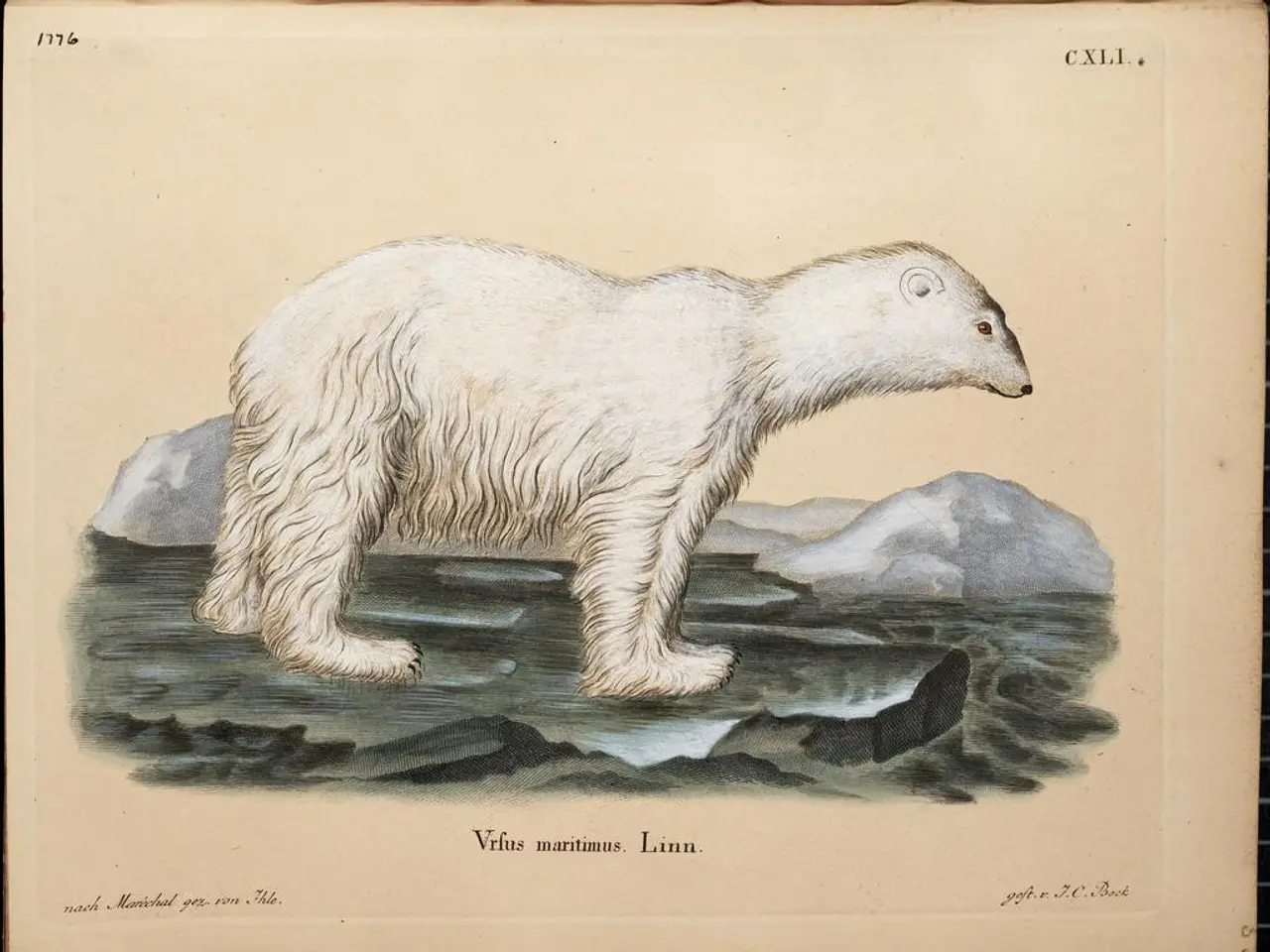Endangered Spirit Bears and the Magnificent Great Bear Rainforest: A Rare Genetic Phenomenon
Nestled within the vast expanse of the Great Bear Rainforest, on the coastal region of British Columbia, Canada, lives a rare and captivating creature - the Kermode bear, or spirit bear. This unique subspecies of the North American black bear (Ursus americanus kermodei) is distinguished by its creamy white fur, a result of a rare recessive genetic mutation.
For thousands of years, indigenous peoples such as the Gitga'at, Kitasoo/Xai'xais, and Tsimshian have revered the spirit bear as sacred. The spirit bear stands as a symbol of the wonders that nature can create when left undisturbed.
This genetic anomaly, known as leucism, reduces pigmentation but does not completely eliminate it. Unlike true albinos, spirit bears retain dark eyes and noses, giving them a unique and striking appearance. Interestingly, only about one in ten black bears carry this recessive gene, but only offspring inheriting it from both parents have white fur.
The spirit bear's white fur offers an advantage in its natural habitat. As expert fishers, they may have an advantage catching salmon due to their white fur blending with the bright sky, providing a camouflage of sorts. Salmon are crucial to the Great Bear Rainforest ecosystem, providing food for a variety of species including spirit bears.
The Great Bear Rainforest is home to a unique combination of climate, geography, and biodiversity, providing refuge for countless species. Conservation efforts have led to the protection of large swathes of the rainforest from logging and development, ensuring that the spirit bear's story continues to inspire awe in generations to come.
Eco-tourism, guided by local First Nations, provides sustainable income and raises awareness about the spirit bear's plight. Guided tours offer a chance to glimpse a spirit bear in the wild and learn about the rainforest's ecology and First Nations culture. The spirit bear's story is a call to cherish and defend the precious places that still harbor life's great mysteries.
The spirit bear's continued existence is a testament to the power of community and the enduring value of nature. Indigenous stewardship and conservation partnerships have resulted in groundbreaking victories for the Great Bear Rainforest. The spirit bear, with its enigmatic allure, continues to capture imaginations far beyond its rainforest home and appears in various forms of media, often symbolizing mystery, resilience, and hope.
[1] National Geographic Society. (2020). Spirit Bear. National Geographic. Retrieved from https://www.nationalgeographic.com/animals/mammals/s/spirit-bear/
[2] Cumming, G. S., & Pimm, S. L. (2005). The Great Bear Rainforest: A conservation success story. Trends in Ecology & Evolution, 20(11), 619-623.
[3] Macdonald, D. W., & Langer, M. (2013). The bear: A natural history. University of Chicago Press.
- Climate change and ecological studies have shown that the Great Bear Rainforest, a unique region in British Columbia, Canada, is home to a rare creature – the Kermode bear, also known as the spirit bear.
- In environmental science, this subspecies of the North American black bear has a genetic mutation that results in its creamy white fur, known as leucism.
- Science reveals that this genetic anomaly affects the bear's pigmentation but spares its dark eyes and nose, setting it apart from true albinos.
- Genetics demonstrate that only one in ten black bears carries the recessive gene for white fur, but offspring inheriting it from both parents will have white fur.
- Conservation efforts, education, and self-development programs emphasize the importance of preserving the spirit bear's habitat, the Great Bear Rainforest, which is rich in climate, geography, and biodiversity.
- Lifestyle choices that promote sustainable living, such as home-and-garden practices and reduction of carbon footprint, contribute to the protection and conversation of areas like the Great Bear Rainforest and its inhabitants.
- As a symbol of mysteries and hopes of the natural world, the spirit bear is celebrated not only in its native rainforest but also in various forms of media, further emphasizing the need for environmental conservation and personal growth in the face of climate change.




